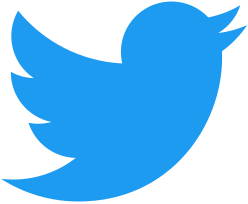
I’ve been bird-watching. I’ve followed the events at Twitter this week with a morbid fascination: Elon Musk’s arrival at Twitter HQ bearing a sink; the outrage at a billionaire buying up a major cultural outlet (which overlooks all the other billionaires making similar purchases, and most of all, that Twitter itself help make founder Jack Dorsey one, but for some reason, this time is different); the questionable sagacity of predicting Twitter is doomed after a mere seven days of changing hands (this from the same media that told us the Twitter sale itself was doomed from the outset); the layoff of half of Twitter’s workforce; and a notable, but not mass, migration to Mastodon, a Twitter lookalike with a more distributed modus operandi (and no billionaire owner).
I’ve been on Mastodon since 2018. I’ve never liked the Pepsi-or-Coke situation with Twitter and Facebook, so I dipped my toe in the Mastodon waters four years ago in the hope of finding a better situation. I didn’t. My Mastodon feed was tumbleweeds, mostly cat photos and random musings on how much better Mastodon is than Twitter. The way to build your Mastodon feed is to follow more people, but I could find no one there I knew or cared to follow—and if I did, they were on Twitter too, so might as well follow them there.
My dusty Mastodon feed greened in the past week. It has more interesting content now, and my own messages (“toots” in Mastodon parlance) are getting some engagement as well.
With the growth comes growing pains. I’m already having a knee-jerk hipster reaction to the increased traffic there, similar to that sinking feeling one gets when your favorite cafe tucked away in a quiet neighborhood gets Yelped.

Worse, I’m already starting to see the kind of toots my Twitter feed was flooded with a few years ago: Smug, taunting, highly-politicized messages supposedly proving how people not-like-the-message’s-author are idiots. This was one of the reasons I wanted to find an alternative to Twitter in 2018.
(How did I halt the flow of those messages on Twitter? I stopped following people who retweeted those kinds of messages. Harsh, yes, but if you’re repeatedly propagating material I don’t want to read, I reserve the right to stop following you. The Twitter algorithm picked up on my change of reading habits, and pretty soon that kind of content disappeared from my feed.)
The real question is if this mild shift in traffic snowballs into the Mass Twitter Migration of 2022 that leads to its collapse.
I’m not holding my breath. Twitter has tremendous inertial energy behind it, no matter its ownership. The blue-checked accounts and users with six-digit-plus followers have a ton of investment in the system. Ten percent of Twitter users produce 90% of its content. Power users are a big draw, and I don’t see any of them packing their bags quite yet.
Mostly, I think those capable and willing to leave Twitter won’t. They’ll simply maintain one more social media account. Most people already juggle Twitter, Facebook, and Gmail. Adding one more to the mix might be annoying, but it’s hardly some massive additional investment of time. And if people are active on both Twitter and Mastodon, then—surprise!—Twitter lives.
My Mastodon account is here. More information on joining Mastodon is here.